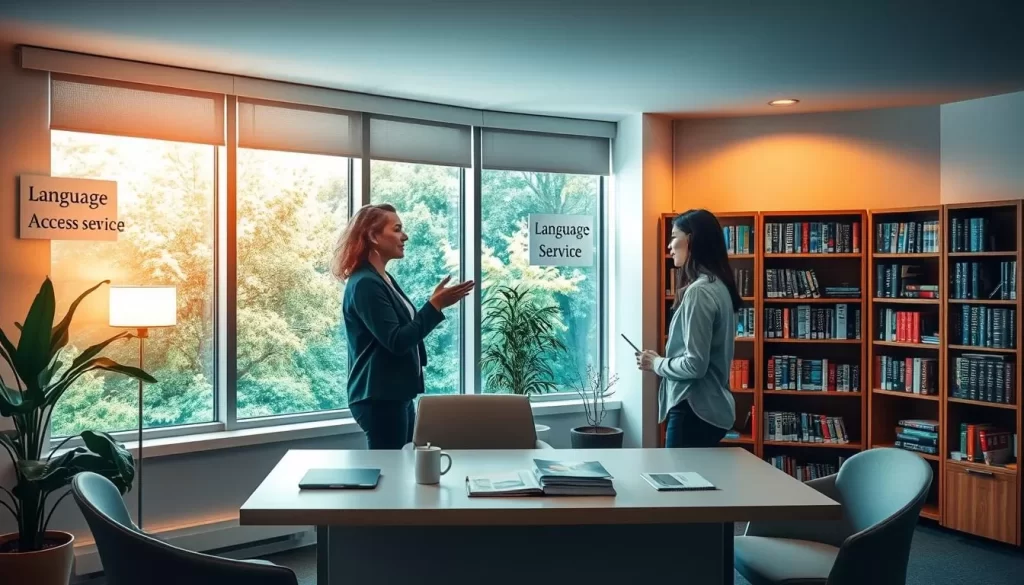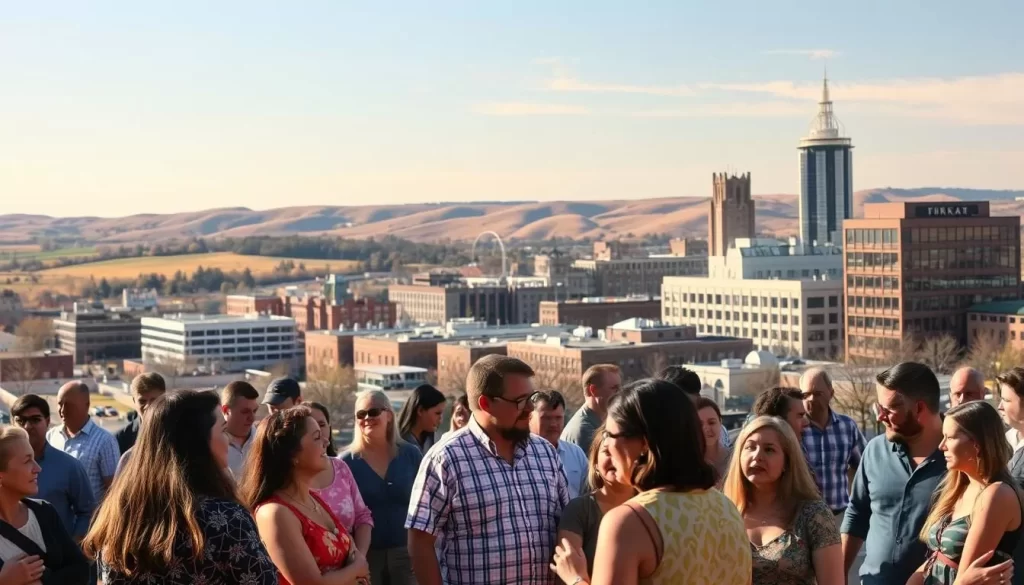✓ Accommodations ✓ Flights ✓ Rental Cars
You’re about to explore the fascinating world of languages in South Dakota, a state with a more diverse linguistic landscape than you might expect. While English is the predominant language, the state’s population includes indigenous people and immigrants who speak their native languages.
As you delve into the demographics, you’ll find that 6.4% of people over the age of 4 (around 58,229 residents) speak a language other than English at home. This diversity is a crucial aspect of the state’s cultural identity, with language access services playing a vital role in supporting communities with limited English proficiency.
You’ll gain insight into the official language status and its impact on government, education, and daily life, as well as the demographic breakdown of language speakers across the state.
Language Diversity in South Dakota
The linguistic landscape of South Dakota is characterized by a blend of indigenous, European, and other languages brought by immigrants. This diversity is a result of the state’s complex history and the various cultures that have settled there.
Demographics and Language Statistics
South Dakota’s population is a melting pot, with Native American tribes being the original inhabitants. The state’s demographics have been shaped by immigration from various parts of the world, including Europe, Asia, and more recently, the Middle East and Africa. As a result, the languages spoken in South Dakota are diverse, reflecting the state’s cultural heritage.

Historical Context of Languages in South Dakota
Historically, South Dakota was first inhabited by indigenous people, including the Sioux tribes, Yanktonais, and Lakota. The arrival of European settlers in the 1740s introduced new languages, with British and French fur traders being among the earliest non-indigenous language speakers. Over time, German immigrants significantly influenced the linguistic landscape, alongside people of Scandinavian, Bohemian, Dutch, Finnish, and Welsh ancestry. More recently, Hispanic, Asian, Middle Eastern, and African immigrants have contributed to the state’s language diversity.
This historical context helps explain the current distribution of language speakers across South Dakota and provides insight into how different communities have maintained their linguistic heritage.
Official Language Status in South Dakota
You might be wondering about the official language in South Dakota and its implications. The language status in the state has a significant impact on governance, education, and public services.
English as the De Facto Official Language
English is the predominant language in South Dakota, serving as the de facto official language. This means that most government services, educational institutions, and public communications are conducted in English. For you, as a resident or business owner, this implies that having a good command of English is essential for effective communication and integration into the community.
Key aspects of English as the de facto official language include:
- Government services and documents are primarily in English.
- Public schools conduct their curriculum mainly in English.
- Businesses typically operate in English, although some may offer services in other languages.
Language Policies in Government and Education
South Dakota has implemented various language policies to cater to its diverse population. For instance, government agencies and educational institutions must provide language access services for individuals with limited English proficiency. You should be aware that these policies are shaped by federal civil rights laws and are crucial for ensuring equal access to public services.

Some key policies include:
- Providing interpreters and translated materials in government services.
- Developing specific programs for English language learners in schools.
- Ensuring that businesses receiving federal funding comply with language access requirements.
These policies reflect the state’s commitment to inclusivity and equal access, making it easier for you to navigate various services and opportunities in South Dakota.
South Dakota, United States: Official and widely spoken languages
As you explore the linguistic landscape of South Dakota, you’ll discover a diverse array of languages spoken across the state. This diversity is a reflection of the state’s cultural richness and its history of immigration and indigenous communities.
English Usage and Prevalence
English is the predominant language in South Dakota, widely used in official contexts, education, business, and daily life. It’s the primary language for government services, public education, and most media. The widespread use of English reflects its status as the de facto official language, facilitating communication across different communities within the state.
Spanish
Spanish is a significant minority language in South Dakota, spoken by a growing Hispanic population. It’s used in various contexts, including education, community services, and media. The presence of Spanish language media and cultural events highlights the importance of Spanish in the state’s linguistic landscape.
Native American Languages
Native American languages hold a special place in South Dakota’s cultural heritage, reflecting the state’s indigenous roots. Languages such as Lakota, Dakota, and Nakota are spoken by Native American communities, with efforts underway to preserve and promote these languages through education and cultural programs.
German
German has a historical presence in South Dakota, brought by German immigrants who settled in the state. While its usage has declined over the generations, German continues to be a part of the state’s cultural identity, with some communities maintaining their linguistic heritage.
Amharic, Somali, and Other Afro-Asiatic Languages
Amharic and Somali are among the Afro-Asiatic languages spoken in South Dakota, reflecting the state’s diverse immigrant communities. These languages are used in community settings and are a testament to the state’s cultural diversity, with many speakers contributing to the local economy and society.
Swahili and Other African Languages
Swahili, along with other African languages, is spoken by immigrant communities in South Dakota. Swahili, in particular, serves as a lingua franca for many Africans, facilitating communication across different linguistic and cultural backgrounds.
Other Significant Languages
Beyond the aforementioned languages, South Dakota is home to a variety of other languages, each contributing to the state’s linguistic diversity.
Nepali, Marathi, and Other Indic Languages
Nepali, Marathi, and other Indic languages are spoken by South Dakota’s diverse immigrant populations. These languages are part of the broader category of Indic languages, which are significant in the state’s linguistic landscape. The presence of Indic languages highlights the cultural diversity and the global connections of the state’s residents.
Russian
Russian is spoken by a smaller but significant community in South Dakota, reflecting the state’s history of immigration from Russia and other Russian-speaking areas.
Chinese
Chinese is another language represented in South Dakota, with speakers contributing to the state’s cultural and economic diversity. The presence of Chinese language speakers is a part of the broader trend of Asian immigration to the United States.
French
French, while not as widely spoken as some other languages, has a historical presence in South Dakota, with some communities maintaining their French linguistic heritage.
Tagalog
Tagalog is spoken by approximately 1,128 people in South Dakota, representing about 0.14% of the state’s population. The Filipino-American community maintains its cultural and linguistic connections through community organizations and social networks. Many Tagalog speakers are integrated into professional fields, including healthcare, contributing to the state’s economy and cultural diversity.
- You’ll find around 1,128 Tagalog speakers in South Dakota, making up slightly less than 0.14% of the state’s population.
- Filipino-American communities maintain cultural and linguistic connections through community organizations and social networks.
- Many Tagalog speakers in South Dakota work in healthcare and other professional fields, contributing to the state’s economy and cultural diversity.

Language Access Services in South Dakota
Ensuring language access is crucial for serving diverse communities in South Dakota. With the growing need for effective communication across languages, businesses and government agencies are required to provide language access services.
Translation and Interpretation Services
Translation and interpretation services are vital for bridging the language gap. By choosing a leading language services provider, you can ensure high-quality results every time. For instance, hospitals must translate vital documents into the 15 most common languages in their service areas.
Acutrans is an efficient and affordable solution for finding reliable translators or interpreters. Their team offers localization services that adapt content for cultural relevance, not just linguistic accuracy.
Language Access Requirements for Businesses and Government
Federal civil rights laws require businesses and government agencies receiving federal funding to provide language access services. This ensures that people with limited English proficiency can access essential services and information in a language they understand.
- You should know that federal civil rights laws require businesses and government agencies receiving federal funding to provide language access services.
- These requirements ensure that people with limited English proficiency can access essential services and information in a language they understand.
- Healthcare providers in South Dakota must comply with specific regulations, including translating vital documents into commonly spoken languages in their service areas.
- Government agencies at state and local levels have developed language access plans to meet the needs of diverse communities.
- Businesses serving the public benefit from providing language access not just for compliance but also to expand their customer base.
- The implementation of these requirements varies across industries, with healthcare, legal, and education sectors typically having more formalized processes.
- Technology solutions for translation and interpretation have made compliance more achievable, even for smaller organizations with limited resources.
- Professional language service providers offer localization services that adapt content for cultural relevance, not just linguistic accuracy.
Conclusion
South Dakota’s linguistic diversity is a reflection of its history, immigration patterns, and the resilience of its residents. The state’s language landscape is characterized by a de facto official language, English, alongside numerous other languages that contribute to its cultural tapestry.
For businesses and organizations in South Dakota, understanding the language needs of the population is crucial. This is where a professional language services provider comes into play, offering translation and interpretation services to bridge the language gap. As the United States continues to diversify, South Dakota’s approach to language access will likely evolve, ensuring that all residents have access to essential services, including healthcare.
By choosing a reliable provider like Acutrans, you can ensure high-quality results every time. Our team is dedicated to meeting your company’s translation and interpretation needs.
The above is subject to change.
Check back often to TRAVEL.COM for the latest travel tips and deals.





